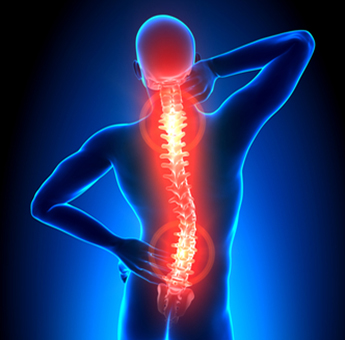Your back pain may be the result of a cause-and-effect chain called The Degenerative Cascade

We all expect physical changes to take place as we age. For instance, many people experience a decrease in height. Whether it's in the arms, neck, back or legs, pain can occur as from everyday wear-and-tear. Not all of our parts come with a lifetime warranty, but the degeneration from wear-and-tear is not always due to age.
Back pain, especially pain caused by spinal degeneration, can occur at any age. Back pain caused by degeneration is the result of a process often called "The Degenerative Cascade." This is a natural process that can be triggered by unhealthy influences, genetics, or other causes. The degenerative cascade is often the underlying cause of many spinal conditions.
The Degenerative Cascade
When the term "degenerative cascade is used regarding the spine, it's referring to the problems caused within the spinal structure due to parts of the spine deforming or wearing down. These deformities create a cause-and effect chain, or cascade, that affects other parts of the spinal structure.
For some, degeneration may occur and never be recognized until old age. Many people may experience no pain from spinal issues, but the same issues may cause pain in other people.
Unique Cascades
Just as not all people are alike, not all spines are alike. Every person's degenerative cascade is unique. For some, the process may begin early, but for others, it may begin later in life. While your age is not a direct indication of what stage of degeneration, it can, however, indicate a probability of degeneration. For example, a 30-year-old person is less likely to have experienced as much degeneration as an 80-year-old person. However less likely it may be, though, advanced degeneration at an early age does happen, as age is only one of the factors in the cause-and-effect cascade of degeneration. Genetics and inherited conditions, as well as lifestyle factors can contribute to degeneration. Lifestyle factors can include smoking, weight, and stress, among others.
Shrinking of Vertebral Disk
One example of the degenerative cascade in action can be seen in the shrinking that occurs in the vertebral discs in the spine. Your spine is made of different sections of vertebral discs. The cervical section of the spine is in your neck, the thoracic section is in your upper back, and the lumbar section is in your lower back. Vertebral discs separate the vertebrae in your spine, acting as shock absorbers for the spinal column by providing a cushion between the vertebrae. These discs are made of tough, elastic material that allows the spine to bend and twist naturally. The tough outer wall of the disc is called the annulus fibrosis, while the soft, watery gel material contained inside the disc wall is called the nucleus pulposis.
As you progress through the degenerative cascade, the liquid in the discs can dry out, causing the disc to flatten. This results in a loss of height, which you may think of as "shrinking." In response to the height loss, the vertebrae in the spine will attempt to keep the disc protected and covered by growing bony protrusions. These protrusions may compress or impinge on the nerves in the spine. This may result in pain in the immediate area or the area to which the nerves correspond. In some patients, this may result in no pain at all. It's in this way that the degenerative cascade is different for every individual.
